Pashupatinath is a well-known Hindu temple located on the bank of the holy river Bagmati, approximately 5 kilometers east of Kathmandu's central city. Many Hindus think of this Shiva temple as one of the most important places to visit on a pilgrimage. The primary reason for traveling to this world heritage site is to learn about the history and cultural traditions of the local Hindu population practices.
Here, we have brought a detailed blog about Pashupathinath, which depicts the information of Pashupathinath Temple's history, Truth & facts, why it is famous among all travelers, a brief about Shiva Linga, its exact location, and entrance fee as well. Whether you're writing an essay or doing research, this guide will help you learn more about Nepal’s famous spiritual site.
Book Guided tours that cover the Pashupatinath Temple:
A Brief History of the Temple of Pashupatinath
This Hindu temple in Nepal is said to have been constructed by Supuspadev, a Licchhavi king who ruled the Kathmandu Valley between the years 464 and 505 AD, according to the Gopal Vamshavali book, which is the oldest chronicle book ever written. According to another historical chronicle, the Pashupatinath temple was constructed as a simple devalaya (temple complex) in the shape of a linga. This was before Supuspadev built a temple with five stories.
Over the course of many years, the temple has undergone extensive renovation. According to legend, Bhaskar Verma, a Licchavi ruler who ruled during the 6th century, sprinkled the temple with gold, which is when the gold gilt ceiling was first constructed. However, the temple's present state dates back to the 16th century, during the reign of Shivasimha Malla, who ruled from 1578 until 1620 AD. Nonetheless, it underwent additional remodeling in the years 1674 and 1697, respectively.

The Untold Truth About Pashupatinath Temple
In point of fact, the most notable characteristics of the Pashupatinath temple complex are the fact that it has four doors on each side, all of which are gilded in silver, and that the roofs of the struts are gilded in gold. All of the available spaces have either been painted or carved with a variety of decorative items. On the struts are also depictions of a variety of gods and goddesses, striking a variety of poses. The current appearance of a temple dates back to the 19th or 20th century AD, during a pivotal period in Nepalese history when the Rana governed over the Kathmandu valley from 1846 AD to 1950 AD. Today, the Pashupatinath temple, in its present form, features silver-glided doors. Rana was successful in elevating themselves to the position of being the most influential prime minister in the nation. On the other hand, King Mahendra was responsible for constructing the entrance gate that features a painting of Lord Shiva (Hindu god). As one of Nepal's most notable monarchs, Mahendra played an important role in advancing the country's economy and foreign policy.
Daily pujas, festivals, and special pujas are all performed at the main temple of Pashupatinath, which is known as the Pashupatinath Temple. There are 3,200 statues, each depicting a different god or goddess. There are a number of other smaller temples devoted to a variety of deities situated in and around the premises of the main temple. Examples include the temples of Kritimukha Bhairav (7th century), Vasuki, Unmatta Bhairav, the temple of Lord Brahma (9th century), Kotilingeswor Mahadev, the Radha Krishna temple, and the Parthiveswor (15th to 17th century AD) and Muktimandap.
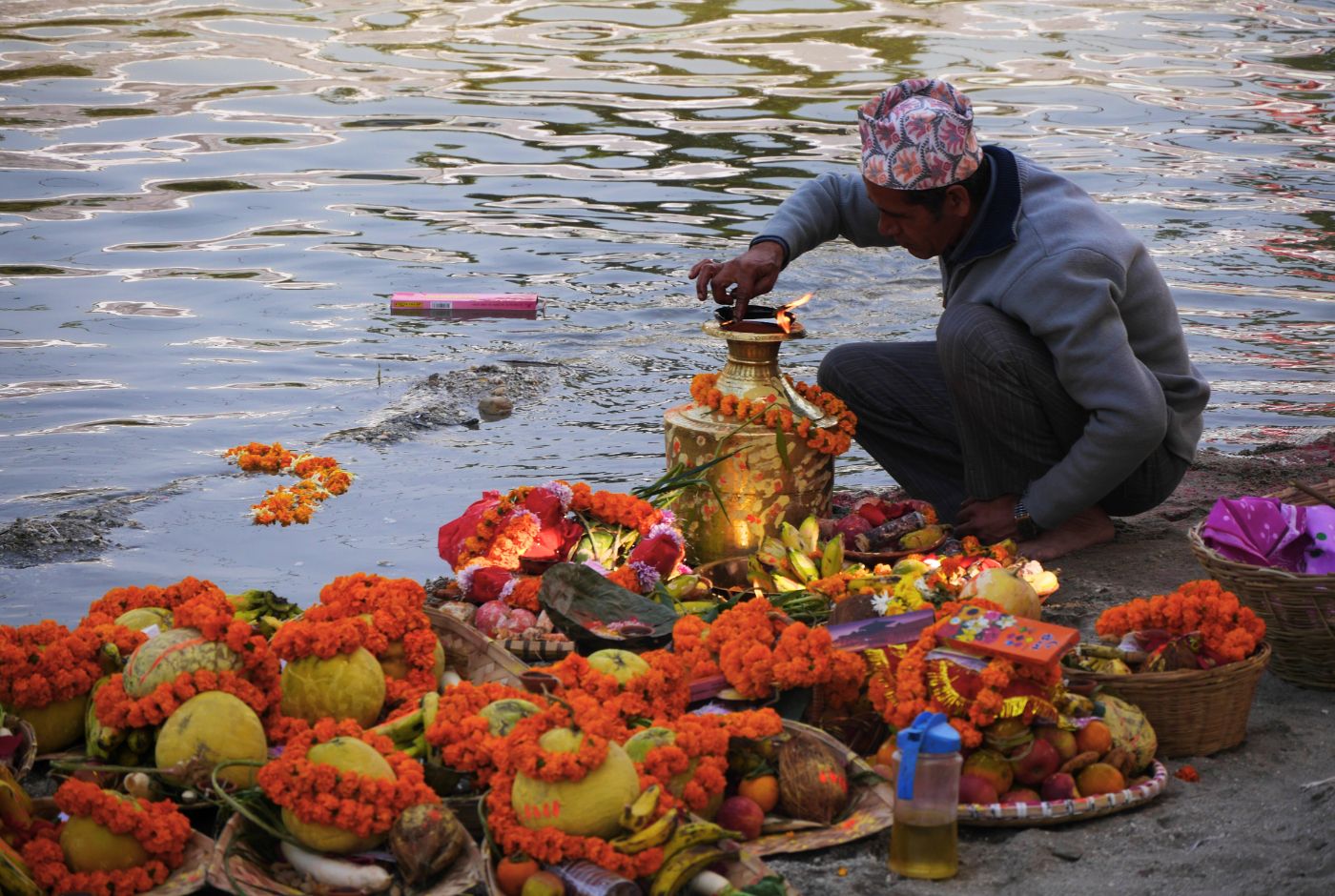
According to Hindu scripture, Pashupatinath is considered one of the most important pilgrimage destinations for people who follow the Hindu religion. The name "Pashupatinath" translates to "lord of all the animals of the natural world" in its original Sanskrit. (Supposed to be able to control everything alive in the universe.)
Hindu pilgrims travel from all over the world to visit this Shiva temple holy site throughout the year. Hundreds of thousands of devotees from Nepal and India travel to attend special events such as the Maha Shivaratri festival, which happens on the 14th day of the waning moon in late February or early March. People all over the world and all over the country know how important the site is.
The Pashupatinath area was included on the list of UNESCO World Heritage Sites in 1979 AD due to its unparalleled collection of temples, as well as its rich history, legacy, and religious significance. The primary temple is designed as a pagoda and stands tall in the middle of a substantial courtyard.
Pashupatinath Temple, Kathmandu, also known as Shiva Mandir
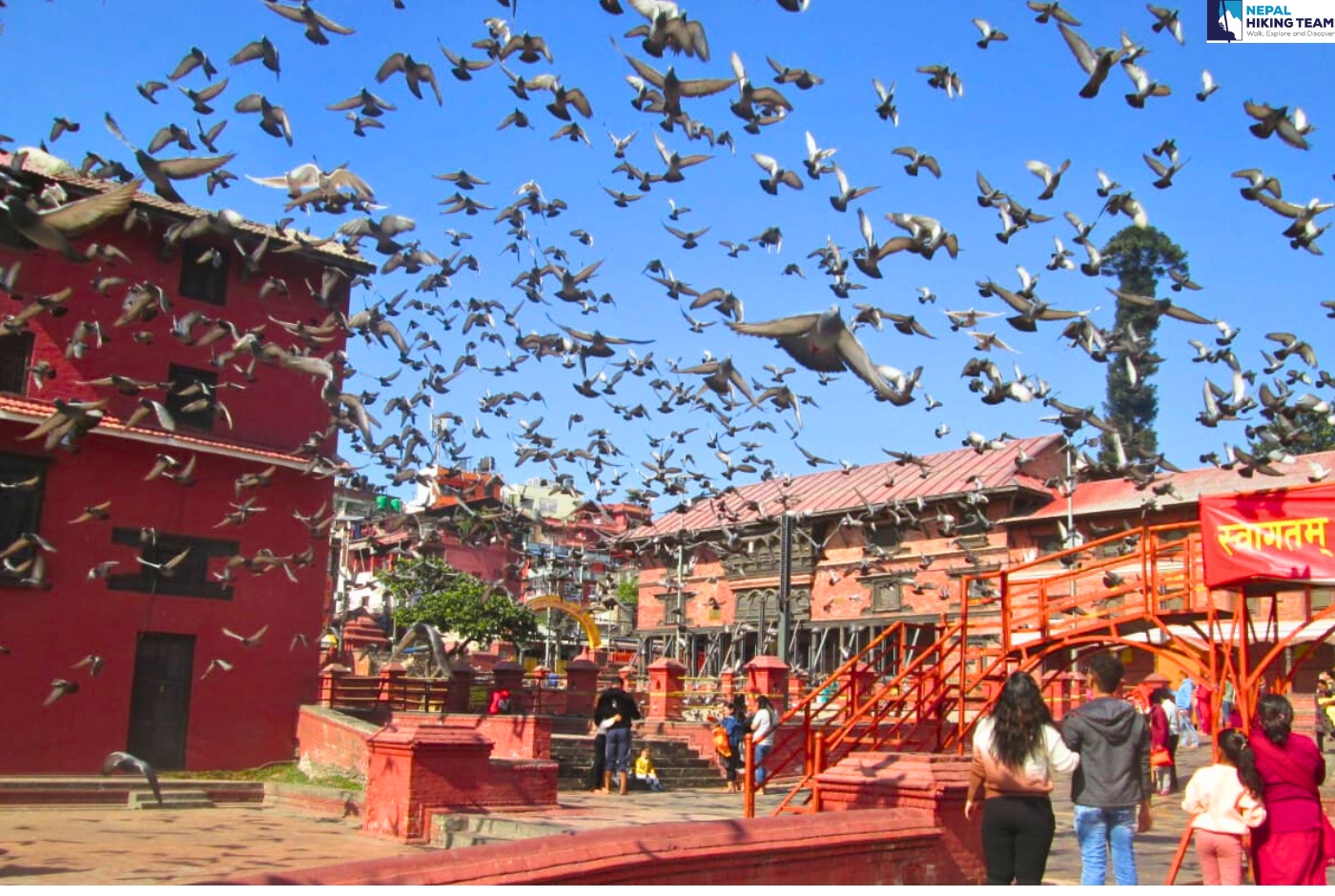
Pashupatinath Shiva Linga | Inside Pashupatinath Temple
The worship of God Shiva, whose linga is associated, is one of the many sects that make up the Hindu religion. There are two distinct kinds of linga: one is simple, and the other is a five-headed Shiva Lingam with heads on all four sides and one on the top. Yoni is represented by the lower portion (vagina), whereas the linga represents the upper portion (penis). It combines the process of creation and the birth of creatures with significance.
According to the legend, the linga is composed of three parts: the lower part indicates that there is Brahma, a god of creation; the middle part has Vishnu, a god of protection; and the upper part has Rudra, a god of medicine or an incarnation of Lord Shiva, a god of destruction.
What is inside the Pashupatinath Temple?

The holiest part of the Pashupatinath temple, known as the main sanctum, has a priest stationed on each side of the linga. The priest of this temple ought to have at least seven vegetarian generations in their family tree. There are 108 individuals known as Bhandaris, each of whom serves as an assistant to Bhatta (the temple's primary priest, who was from South India).
The Virateshwor Shiva Linga is believed to have been constructed between the 7th and 8th centuries and is one of the largest Shiva lingas in Nepal. You can find it at the Rajeshwori Ghat (one of the six most well-known Ghats in the Pashupatinath region).
Pashupatinath in Kathmandu

More than a hundred Shiva lingas, both small and large, can be found in and around the Pasupathi area. The Vedas and the Puranas (Hindu scriptures) provide a full overview of the four-faced Lingam that is housed within the sanctum of the temple. Tatpurusha - East, Sadyojata -West, Vamadeva - North, Aghora - South, and Ishana (Up).
Another way to look at the four faces is as symbols of the four Vedas and the four dhaams, which are the four most important Hindu pilgrimage sites (Badrinath, Dwarka, Puri, and Rameswaram).
Moreover, inscriptions dating back to the Licchavi era 32, the Malla period 50, and the Shah period 55 have all been found in the vicinity of Pashupatinath. The 103 Inscription has not yet been made available to the public. There have been 3,200 statues of various gods and goddesses so far. In addition, the region surrounding the Pashupatinath temple has 37 temples and statues that date back to the Malla period, as well as 27 temples and statues that date back to the Licchavi period.
Finally, it is said that all of the curses will be removed from anyone who comes to the Pashupatinath area and visits, even if that person has committed grave sins throughout the course of their life.
Hindu Funeral Rites Performed at Pashupatinath.

Hindus conduct funeral rites in order to facilitate the deceased person's salvation and journey through the afterlife. Rituals are typically carried out on the banks of rivers at various points throughout the world. The deceased individual's body is transported to the edge of the river, where it is placed on a funeral pyre and set ablaze. The sons of the deceased person will shave their heads before or after lighting the funeral pyre.
The sons will then sit in mourning for thirteen days, during which time they will wear nothing but white robes, remain isolated, and consume only one meal of rice per day, frequently supplemented with ghee (butter), and fruits. During this time period, they are not permitted to touch anyone else. Chanting from the holy book known as the Garuda Puran is done to comfort those in mourning. Religious rites are carried out at this time to respect the spirit of the person who has passed away.
Pashupatinath Mandir Nepal
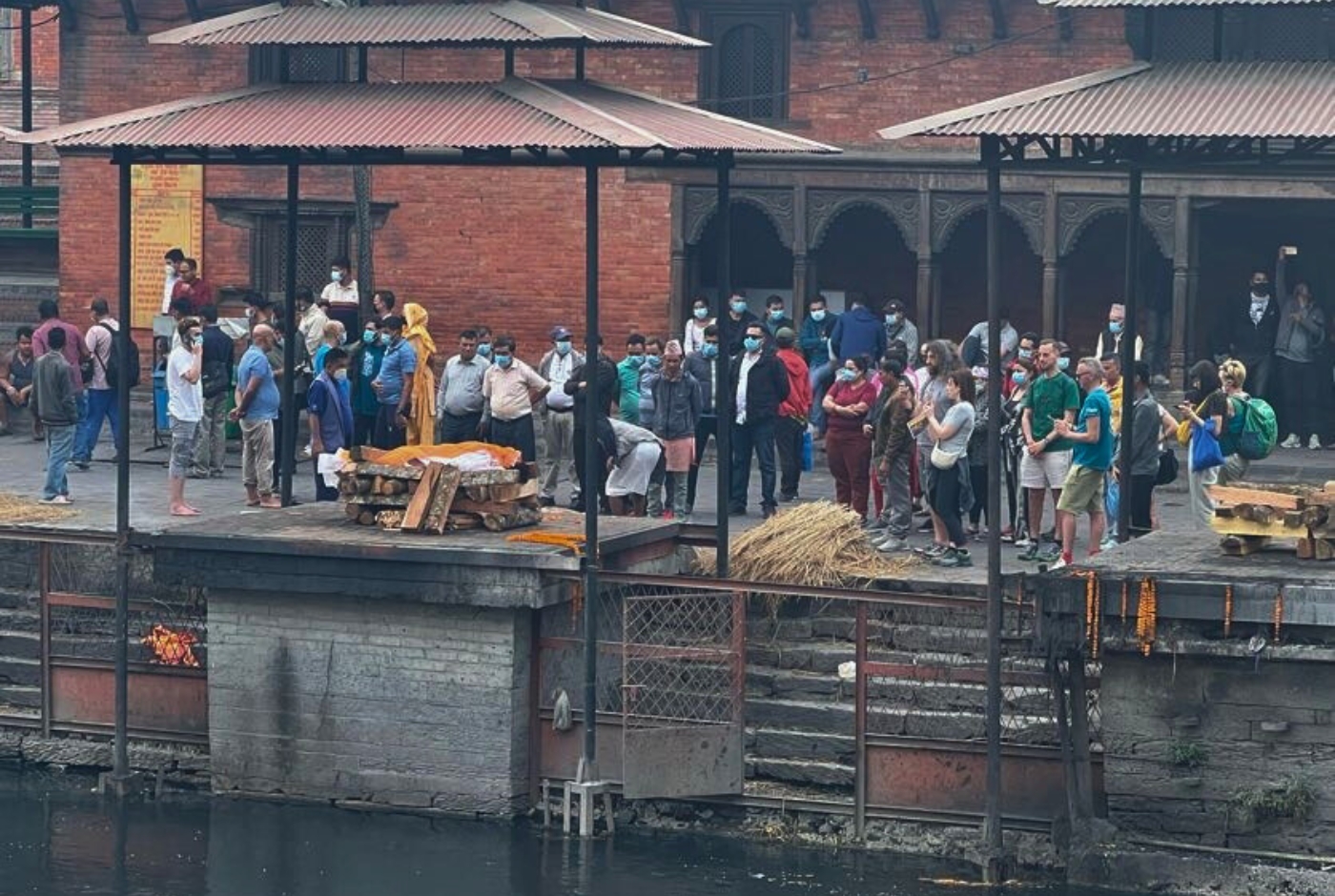
On the thirteenth day, an elaborate ceremony is held in honor of the heavenly abode of the deceased soul. The deceased person's belongings are brought before the priest in the expectation that the deceased soul will acknowledge their value and accept them. After that, on the same day of each month throughout the following year, a ritual that is very similar but performed on a smaller scale is carried out. All throughout the year, those who are in mourning wear white clothing. On the other hand, many people in today's world don't wear white clothes after 13 days because it's inconvenient for them.
After a year has passed, the mourners take part in a religious ceremony called "Sraddha," and at the conclusion of the ceremony, they throw away the white clothing. Shraddha has performed annually in memory of those who have passed away.
Pashupatinath Temple Location: Where is Pashupatinath Mandir?
Location of Pashupatinath Mandir and answer to Pashupatinath Mandir Kahan Hai: Pashupatinath Temple is located on the banks of the sacred Bagmati River, about 5 kilometers to the east of central Kathmandu, Nepal.
Coordinates of Temple:
- Latitude: 27.7104° N
- Longitude: 85.3486° E
How can we reach the Pashupatinath Temple? Kathmandu to Pashupatinath Distance
From Thamel: The easiest way to get to Pashupatinath Temple is by booking a prepaid taxi. It’s a quick and convenient option, especially for first-time visitors.
Other Options to Reach the Temple:
Local Buses or Vans: Head to Balaju or Macchapokari, or Ratnapark Bus Station, where you can find buses or vans going toward Pashupatinath. It’s a budget-friendly option, although it might take longer due to stops.
Ride-Sharing Apps: For a more affordable and modern alternative, you can book a ride through apps like Pathao or InDrive. These services are reliable, cost-effective, and easy to use—just download the app on your phone.
The Pashupatinath temple (Pashupatinath Mandir) is about 5 kilometers northeast of Kathmandu's downtown center. Whereas from Tribhuvan International Airport, Pashupatinath is only about 2 -3 far away, a quick 5- 10 drive then there you will reach. Alternatively, you can use Google Maps if you are near the Pashupatinath area. Simply type "Pashupathinath Temple," and you will get the exact direction and location of the temple.
Festivals Celebrated at Pashupatinath Mandir
Pashupatinath Temple in Kathmandu is the center of many Hindu festivals, most notably Maha Shivaratri, which is celebrated in February or March, and Teej, a festival primarily for women. Other notable festivals observed at the temple include Janai Purnima and Ekadashi.
- Maha Shivaratri: This is the most important festival celebrated at Pashupatinath Temple. It is a night of devotion to Lord Shiva, with fasting, vigils, and prayers. Thousands of devotees, including Sadhus (holy men), visit the temple to pray, offer prayers to the Shiva Lingam, and participate in rituals like the offering of milk, water, and beal leaves.
- Teej: This is a significant festival for women in Nepal, with many women from across the country visiting Pashupatinath Temple to pray for their families' well-being. It is a time of singing, dancing, and ritual activities dedicated to Shiva.
- Janai Purnima: This festival is marked by the changing of the sacred thread (Janai) by Hindu men, particularly Brahmins and Chhetris, and the wearing of a sacred thread around the wrist by all participants.
- Ekadashi: This is a fortnightly festival observed on the 11th day of the lunar month, with two particularly important Ekadashis, Harishayani Ekadashi in June/July and Haribodhini Ekadashi in October/November.
Who built Pashupatinath Temple and when?
The Pashupatinath Temple in Kathmandu, Nepal, has a rich history spanning centuries. Its origins are believed to date back to the 5th century CE, with the earliest evidence of its existence recorded around 400 CE.
According to historical chronicles, the temple was initially constructed by a Licchavi king named Prachanda Deva.
Over time, the temple underwent several reconstructions and renovations:
- 11th Century: King Shivadeva (1099–1126 CE) is credited with reconstructing the temple during this period.
- 13th Century: King Ananta Malla added a roof to the temple, enhancing its architectural grandeur.
- Late 17th Century: The current form of the temple was renovated in 1692 CE after the previous structures were affected by termites and earthquakes.
What time does the Aarati at Pashupatinath Temple start?

The Aarati at Pashupatinath Temple begins every evening at 6 PM, creating a spiritual atmosphere where devotees and visitors come together in worship. It’s a beautiful ritual that fosters a sense of unity between God and the devotees, held by the bank of the Bagmati River.
The tradition of the Bagmati Aarati started in the year 2000 but was formally established as a regular practice from 2006. Arriving at least 30 minutes early is recommended to secure a good spot, as the ceremony draws large crowds and offers a deeply moving experience for all who attend.
What is the entrance fee for Pashupathinath Temple?
- The entry fee for Pashupatinath Temple in Kathmandu, Nepal, is NPR 1,000 per day for foreign nationals, while Nepalese people and Indians can enter for free.
- The opening time of Pashupatinath temple is from 4 AM to around 9 PM; There is no such thing as the best time you can go visit this place any time of the year.
- Keep in Mind: Visitors should be mindful of certain restrictions, as shoes, food, drinks, smoking, tobacco products, and revealing clothes are not allowed inside the temple premises.
- Additionally, you must remove your shoes and leather belts. Tie up your long hair before entering temple, and carrying leather items inside is strictly prohibited.
Pashupathinath Kathmandu, Nepal
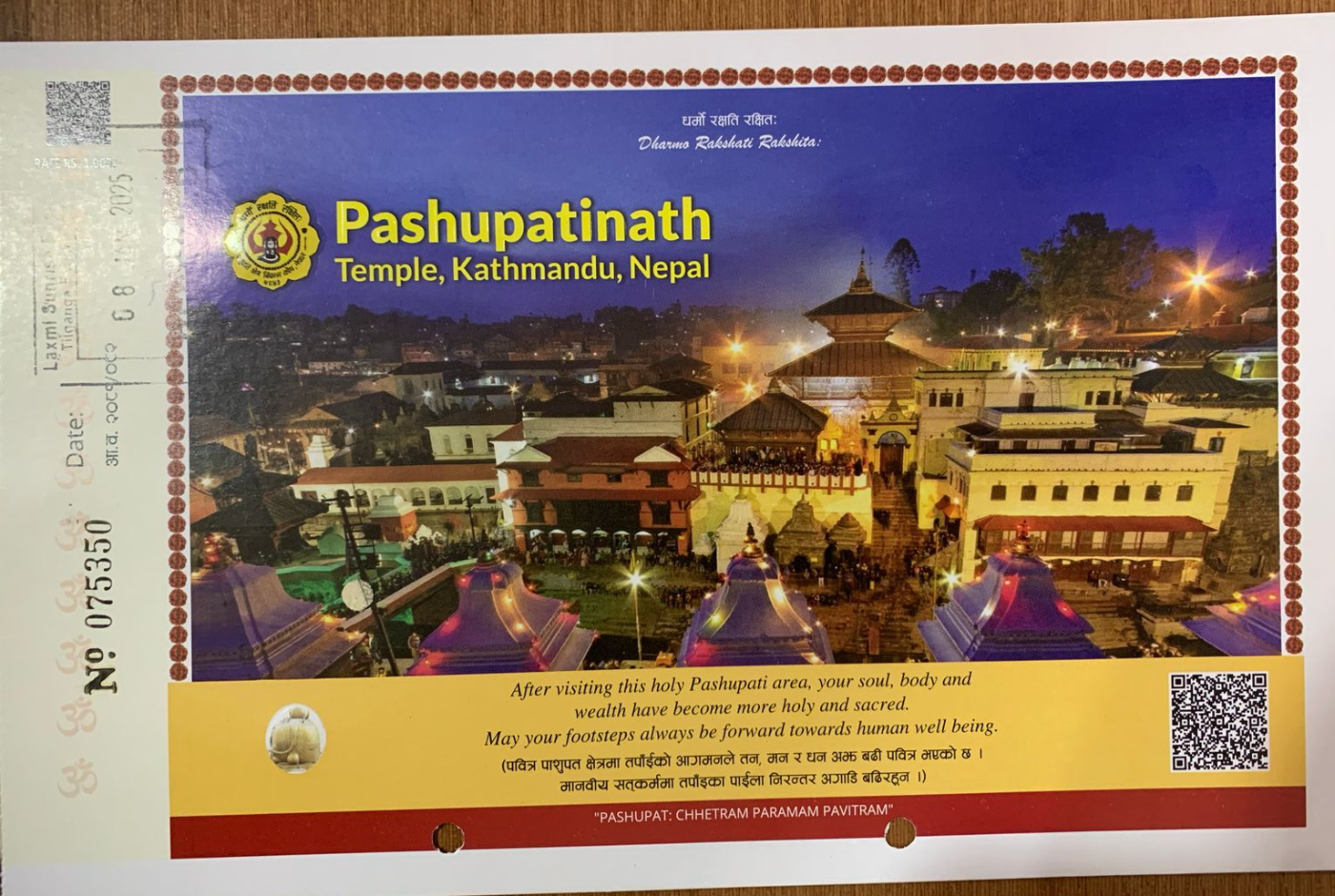
Blessings from Pashupatinath temple: "After visiting the holy Pasupati area, your soul, body, and wealth have become more sacred. May your footsteps always be forward towards human well-being."
How many Jyotirlingas are there in Nepal?
There is one Jyotirlinga in Nepal, which is the Pashupatinath Temple located in Kathmandu. While there are twelve major Jyotirlinga shrines in India, the Pashupatinath Temple in Nepal is considered the head of those twelve, according to some Hindu traditions. It is a highly revered site for Hindu pilgrims from both Nepal and India. However, Pashupatinath Temple in Nepal is not one of the Panch Kedar temples.
Conclusion
It is a well-known Hindu temple on the western bank of the holy Bagmati River and is one of the main reasons for visiting Nepal. If you are visiting Nepal and looking to learn more about Pashupatinath Temple, I hope this blog post is helpful. I wish you all the best on your travels. Please contact us anytime if you have any further questions or comments. We would love to hear from you!
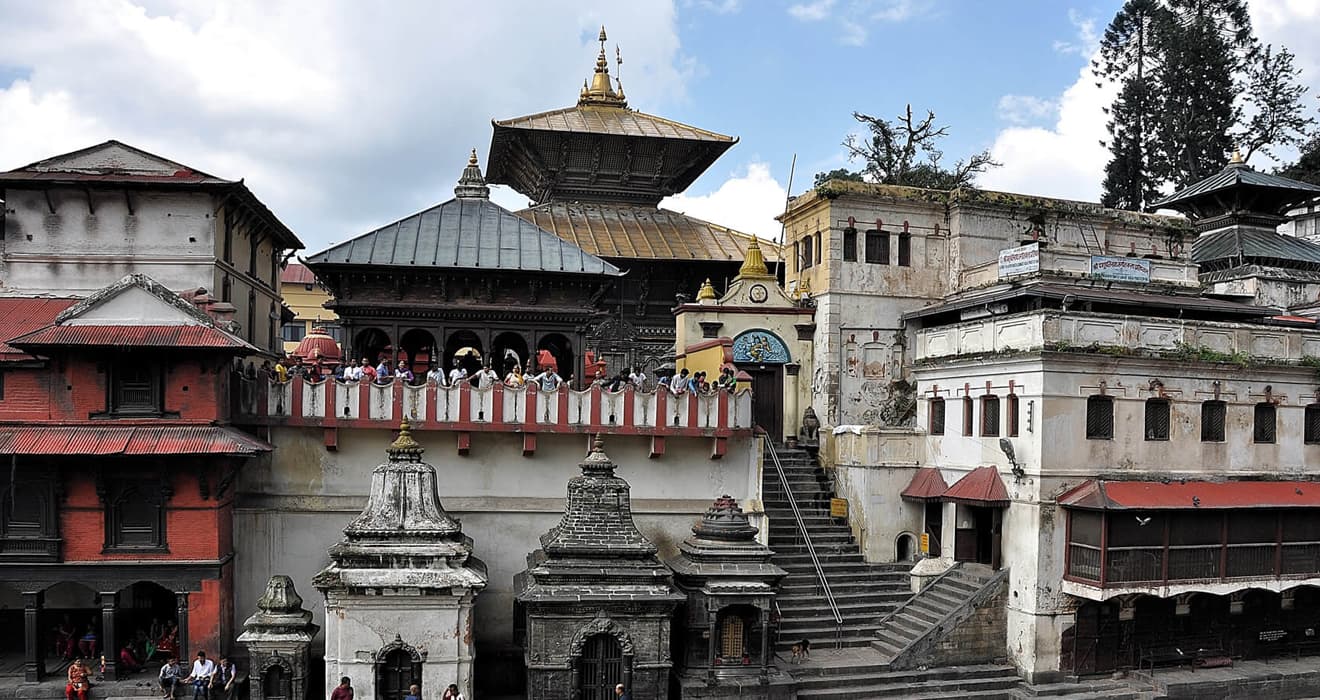
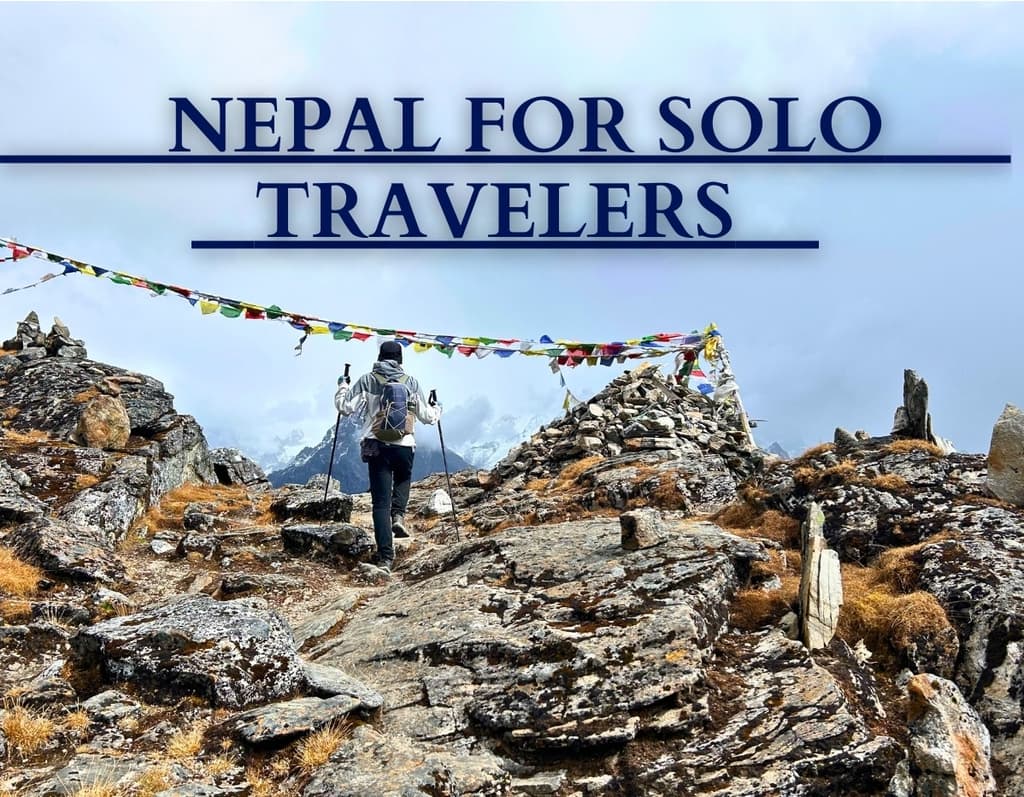

Post a Comment